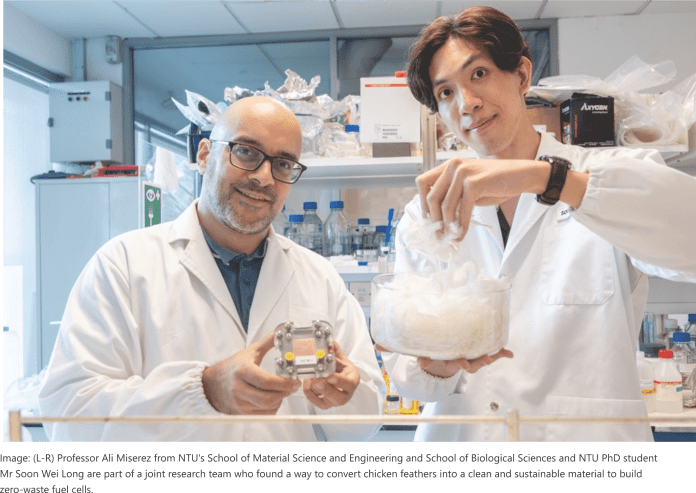Feathers keep chickens warm, and they might also hold the key to creating sustainable fuel cells that can power clean vehicles. Scientists from Nanyang Technological University (NTU) in Singapore and ETH Zurich in Switzerland have found a way to convert chicken feathers into a clean and sustainable material to build zero-waste fuel cells.
By extracting the protein keratin from feathers, then processing it into ultra-fine fibres known as amyloid fibrils, the researchers created a thin membrane capable of conducting protons, which are a vital component of fuel cells.
The researchers tested their feather-based membrane by assembling it in a commercial fuel cell setup. In their tests, the fuel cell could turn on an LED lamp, spin a small fan, and power a small toy car.
Producing such membranes in conventional fuel cells uses toxic chemicals, known also as “forever chemicals”, which are expensive and do not break down in the environment.
The keratin-based membrane developed by the NTU and ETH team is environmentally friendly as it is composed of a biological material and created in a green process that does not produce carbon emissions.
The large amount of industrial chicken feather waste produced by the poultry industry means that the membrane manufactured in the laboratory could be up to three times cheaper than conventional membranes to produce.
Source: Nanyang Technological University













